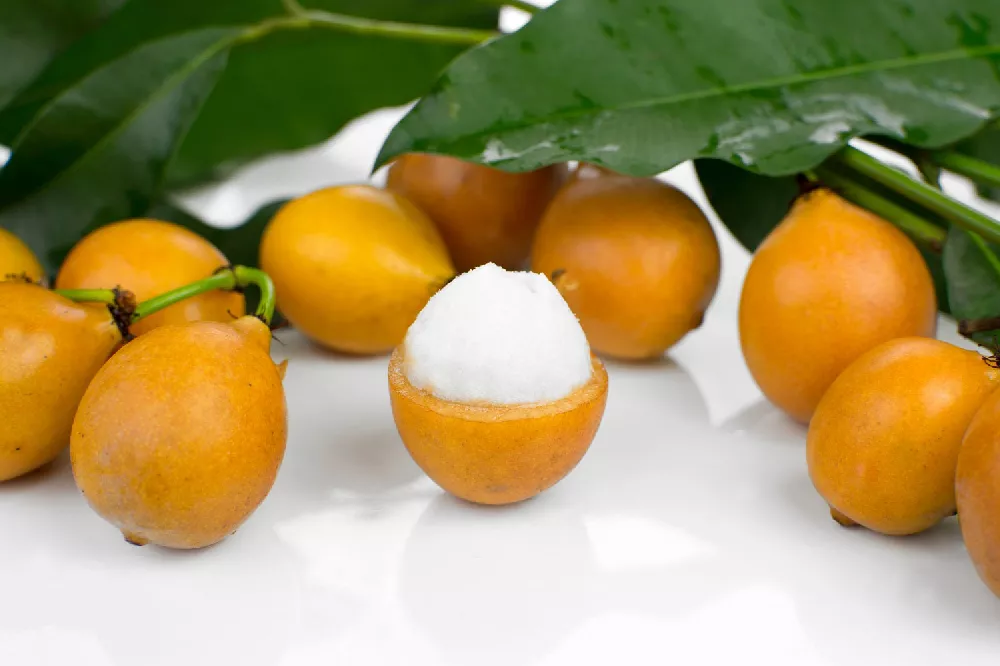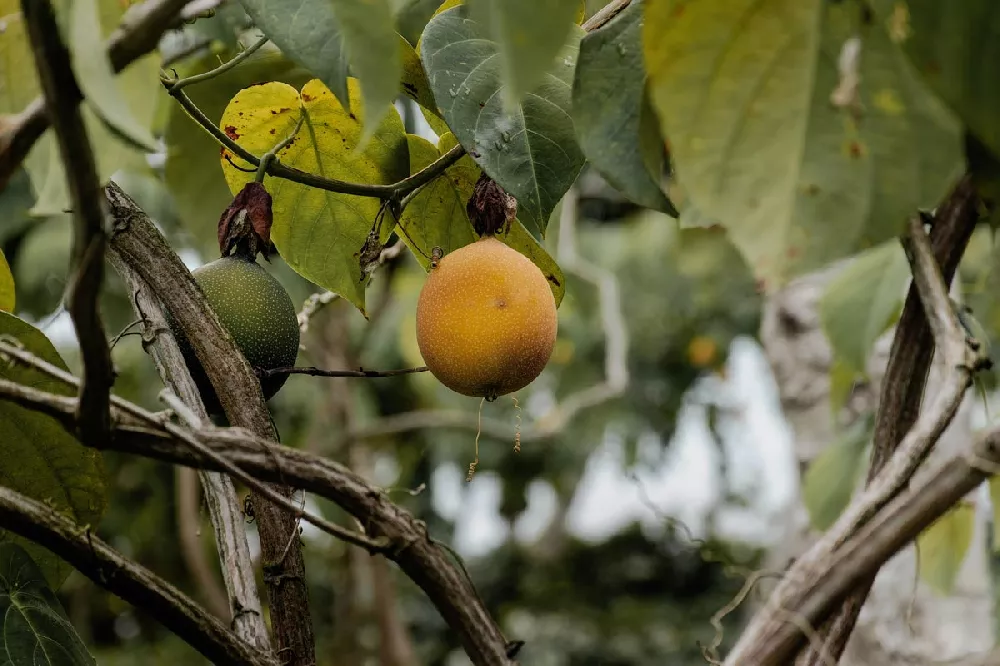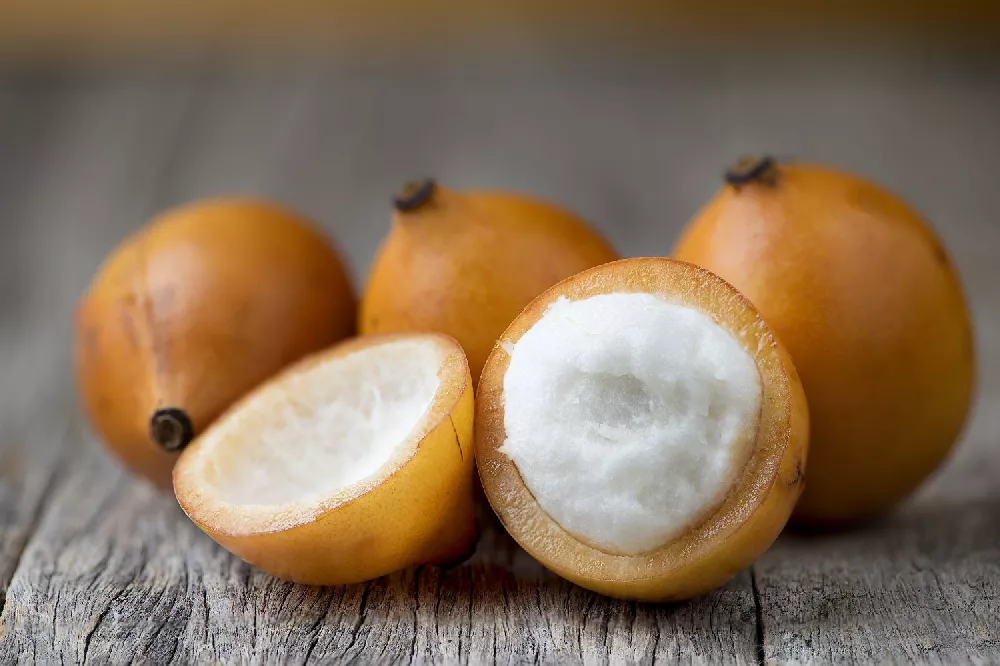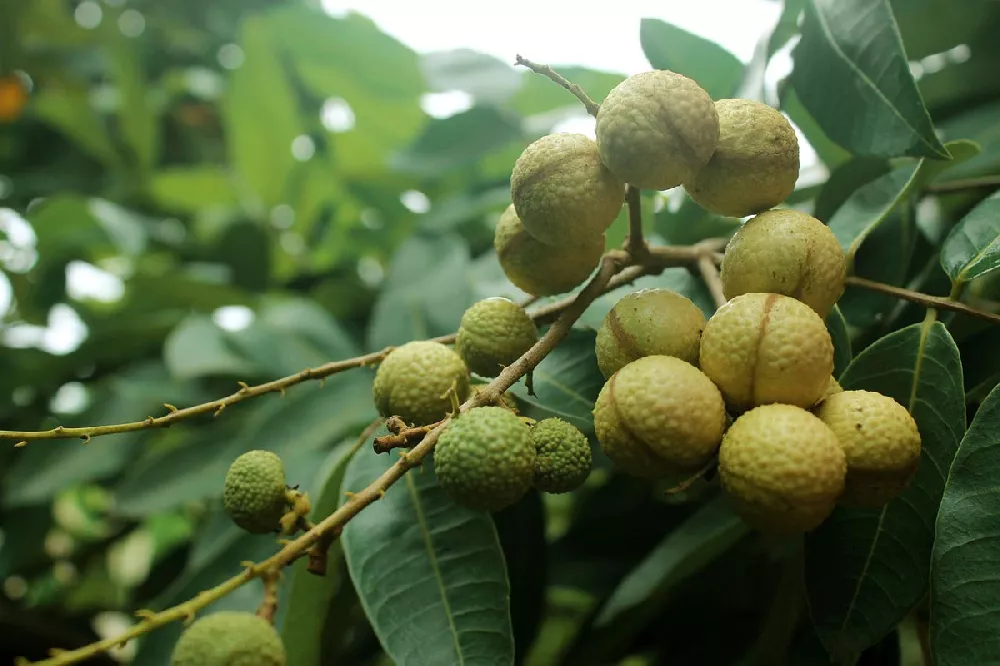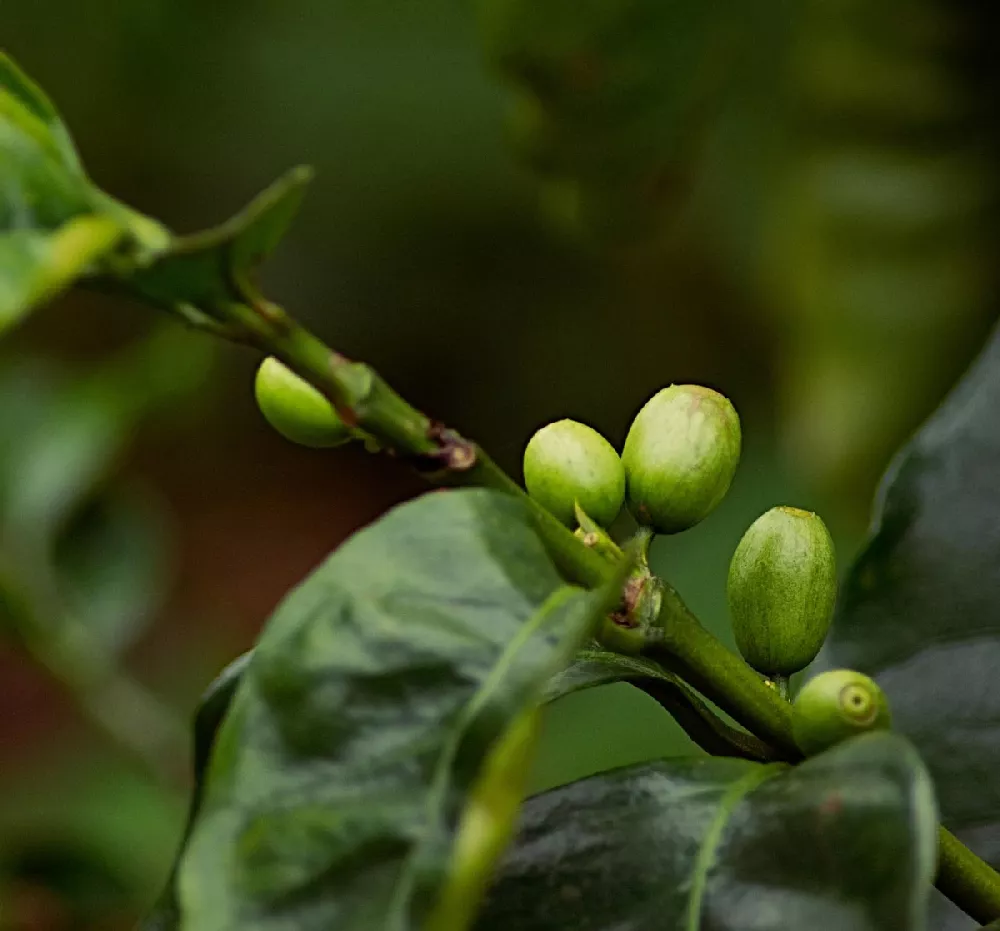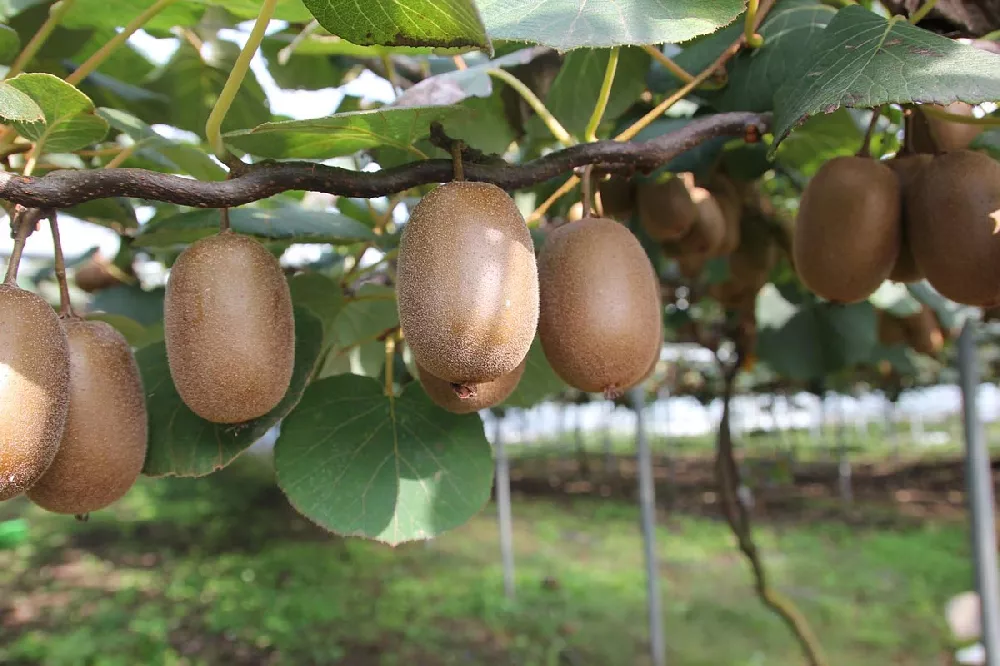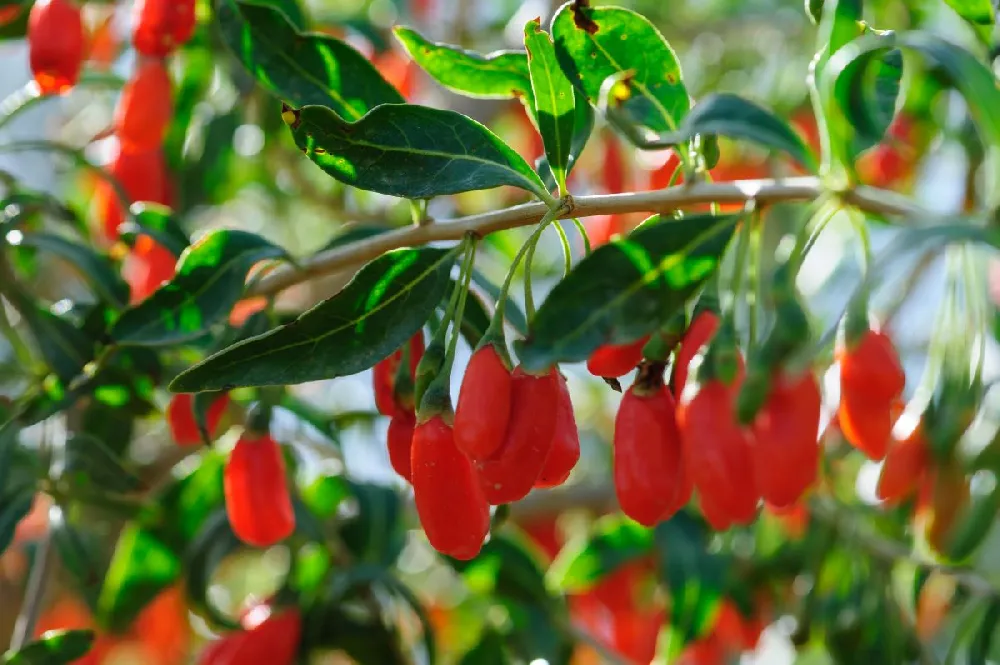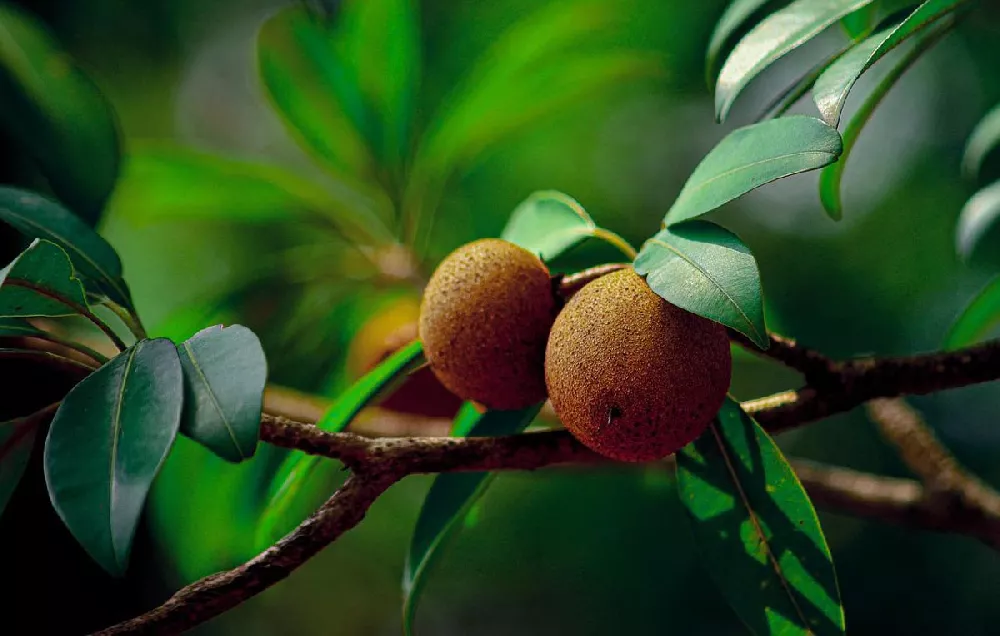- Home >
- Edible Plants >
- Achacha Fruit Tree
Achacha Fruit Tree for Sale - Buying & Growing Guide
The achacha fruit tree may be unfamiliar to you, but it is one that you should know. This plant goes by the botanical name Garcinia humilis and comes from the warm tropical regions of the world. The main point of attraction for an achacha tree is its fruits, which have a vibrant orange outer layer and a pale white interior that holds a favorable tangy taste. Achacha fruit trees also have lance-shaped leaves, which first appear with a light pink color, giving these plants some interesting ornamental appeal as well.
- The tree produces beautiful orange fruits with a sweet and sour taste.
- New leaves have a unique pale pink color.
- It adapts to garden beds and containers.
Enter your zip code to find nearby stores that may carry this plant.
Plant Care
Sunlight

The achacha fruit tree grows best when it receives full direct sunlight for most of the day.
Watering
Do not allow the soil to become waterlogged. Supply water about once per week for mature plants.
Fertilizing

Add a balanced fertilizer about three to four times per year.
Planting and Care
Planting instructions
Plant your achacha fruit tree in an area with full sunlight. The soil in that location should be rich in organic nutrients and capable of holding moisture while allowing for adequate drainage. While achacha fruit trees don’t grow very quickly, they can grow to a considerable size of 12 feet tall or more. As such, it can be difficult to judge how much space one of these trees needs during the planting process. Although it will take many years for this plant to reach its full size, you should plan ahead and give your achacha tree plenty of adjacent space.
Watering and nutrients
In its native range, the achacha fruit tree thrives where the weather is both warm and humid. As such, you should be prepared to give your tree the water it needs. Young achacha trees should get water multiple times per week, and established trees should get water about once a week.
Since achacha trees are such slow growers, it’s in your best interest to give your tree plenty of fertilizer to encourage growth. Balanced fertilizers and organic amendments are quite helpful, and you can apply them multiple times per growing season.
Pollination
With fruit production being the main goal of growing an achacha tree, pollination is something you’ll need to consider. Achacha trees are self-fertile, meaning that you only need one tree to produce fruit, and they often rely on insect species for their fertilization.
But while a single achacha tree can bear fruit on its own, it’s often best to have multiple trees to allow for cross-pollination. When cross-pollination occurs, achacha trees typically produce more fruits per harvest.
Pruning
The best time to prune an achacha tree is just after the harvest has completed. This typically occurs sometime in the mid to late spring months. After all the fruit is off of the tree, you should use sterile pruning tools to remove any dead or damaged part of the tree. It is also advantageous to prune this species into a specific form that is strong enough to support a potentially large fruit harvest. A broad pyramidal shape with many horizontal branches makes for the best overall form.
Pest, diseases, and animals
One of the best aspects of the achacha tree is that it has good resistance to pests, diseases, and animals. If you choose to grow one, you won’t need to spend too much time worrying about or addressing infestations or another ailment. However, some issues are possible. For instance, fruit flies can occasionally be an annoyance with this tree. Still, many of the most prevalent challenges for an achacha tree are more related to improper watering and growth conditions than disease or insect infestations.
Harvesting
You don’t want to harvest achacha tree fruits too early because they will not ripen once they are off the tree. Fortunately, it is relatively easy to tell when these fruits are ready for harvest. The clearest indication is a deep orange color on the outside of the fruits.
Most achacha trees are ready for harvest in the winter and early spring months. After picking one of these fruits, you can access the edible portion by breaking and removing the outer orange layer and removing the few seeds that are on the inside.
Achieving maximum results
Growing an achacha tree requires some patience. Not only does this plant take a while to grow in general, but it can also take a while for it to begin bearing fruit. Once you are able to harvest those fruits, you can store them at room temperature for several weeks before they go bad.
Another helpful tip is to mulch heavily beneath this plant’s limbs. Thick mulch will prevent weeds from popping up and stealing soil nutrients from your achacha tree. Mulch will also help retain soil moisture and add organic nutrients for your tree to consume.
FAQs
What do achacha fruits taste like?
Achacha fruits have an interesting flavor that combines sweetness with a degree of tartness. Some people compare this flavor to that of a mango. However, these two fruits remain noticeably different from one another. An achacha fruit that is ready to eat should be about 4inches long and have a consistent, deep color on the outside. You should avoid eating the outside and the one or two inedible seeds that you'll find on the inside.
Are achacha trees slow-growing?
Achacha trees are slow-growing plants compared to many other fruit trees. These trees can also take a while to reach an age at which they are mature enough to produce fruits. Occasionally, you'll need to wait several years before you receive a considerable harvest. Based on that slow growth rate, it is especially important to give this plant plenty of fertilizer so that it can grow as fast as it can.
Why are my achacha tree's leaves pale?
If you grow an achacha tree, you may find that it has several pale leaves. While these leaves appear sickly, they are often normal. One of the most distinctive features of the achacha tree is that its new growth does not match its older leaves. Rather than holding a deep green color, the new leaves of this plant are pale and pinkish, which should not be a cause for concern in most cases.
Compare Similar Products
You can't add more Product Name - Product size to the cart.
OK